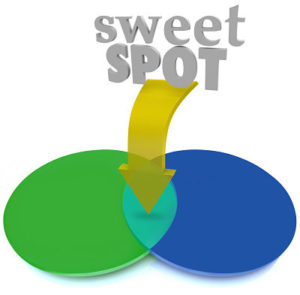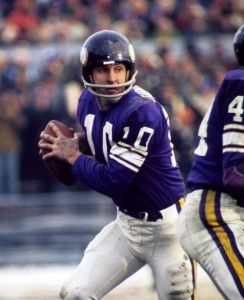Find Your Sweet Spot
November 30, 2016
 Who should buy stuff from you? If you’re like most business owners or leaders that I know, your knee-jerk answer is something just slightly smaller than “everyone on the planet.” But “everyone on the planet” can’t be your sweet spot customer.
Who should buy stuff from you? If you’re like most business owners or leaders that I know, your knee-jerk answer is something just slightly smaller than “everyone on the planet.” But “everyone on the planet” can’t be your sweet spot customer.
You need to narrow it down a little. Businesses who need insurance or parents, or someone who wants to own a house or people with teeth. I didn’t ask who COULD buy stuff from you. I asked who SHOULD. That shift is a dramatic one and one that most business people don’t spend enough time thinking about.
Think of your own buying experiences. Odds are, no matter what you’re in the market to buy – there are plenty of companies that can sell it to you. Yet, you gravitate to one and if that buying experience is a good one and aligns with what you expected – you are likely to go back the next time you need to make the same purchase.
Why?
When we buy something, we don’t just buy the thing or a service; we also buy how the business that sold it to us parallels our life needs/comfort zones. We each have our own list of criteria that is based on a blend of our values, our life’s structure and our emotional connection to their brand.
If time is a more treasured commodity to you than money, you’ll pay more for something at a convenience store or 24-hour drug store.
If money is more important than a relaxing shopping experience, you’ll be the one in line for a couple hours for a door buster sale.
If reliability and fast service are vital to you, you’ll pay the service charge to always have your HVAC repair jumped to the front of the line because you belong to the insider’s club.
If a particular brand (like Harley) makes you feel a certain way or, in your mind, makes others see you in a certain way – you’ll wait for months and pay extra just to get one of their offerings.
When a business connects with a customer who not only likes what they sell but how/why they sell it – the transaction is faster, easier and more frequent. The word of mouth referrals are higher, and the level of satisfaction for both the customer and the employee is higher.
Who doesn’t want that? Well, guess what – you can’t have that if you think that everyone under the sun is your customer. You need to figure out who are your sweet spot customers and how can you serve them and only them.
Business gurus always talk about the 80/20 rule – that 80% of your revenue comes from 20% of your customers. That’s because the 20% are your sweet spot customers. So what happens when you increase that 20% to 50% or 75%?
Each time you work with someone outside your sweet spot, it:
Distracts you from the zone: Part of what makes your sweet spot so sweet is that it’s easier, faster and more satisfying for you to serve those customers. They want exactly what you have to offer, and they value it and how you deliver it.
Costs you money: When you stray from your sweet spot, you have to spend extra time and money to make them happy. You might have to modify what you sell or how it’s delivered. But it doesn’t come easy or cheap.
There’s friction: When someone who is not aligned with your brand/values wants to do business with you, it feels a little off. The fit just isn’t quite right, and you and your employees will notice it. Worst of all – you customer will notice it too.
The work you do is tough enough. Don’t make it harder by chasing after clients who aren’t in your sweet spot.
More
 I grew up in
I grew up in 
 Normally at MMG, we caution clients to be careful of the “I don’t listen/watch/do therefore neither does my target audience” trap.
Normally at MMG, we caution clients to be careful of the “I don’t listen/watch/do therefore neither does my target audience” trap.




